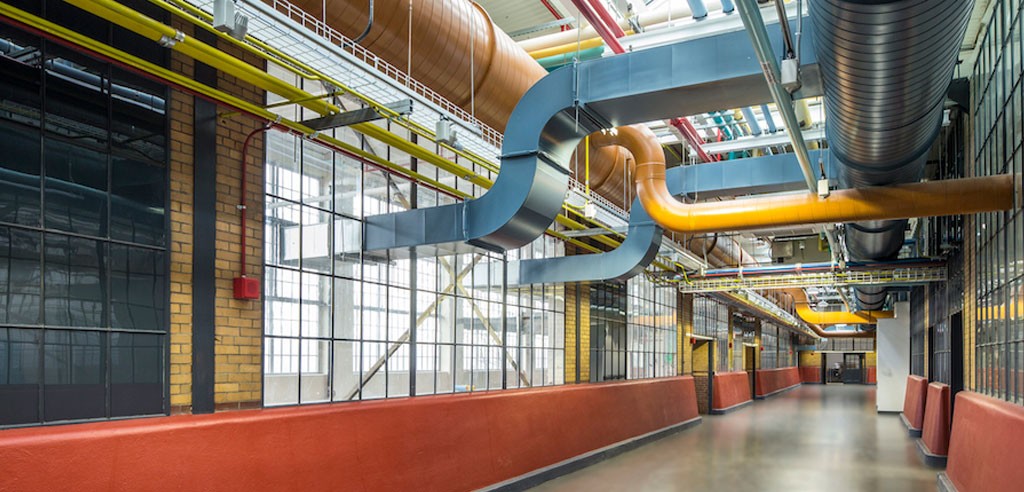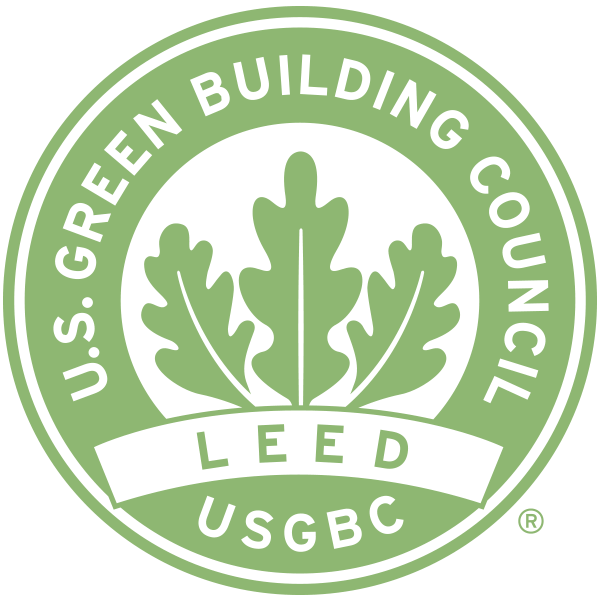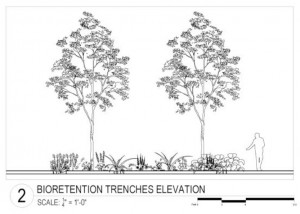Green and clean
The Energy Innovation Center is a leader in green adaptive reuse. The design of its building and grounds meets the highest standards of sustainability and energy efficiency, while preserving the historical character of the building. Through an integrated design-build process, EIC designers and engineers innovated to optimize the performance of vendor components.
The EIC has targeted LEED Platinum certification and is also on track to meet the stringent 2013 District energy, water and transportation emissions reduction targets.
Our building is listed on the National Register of Historic Places and on the List of Pittsburgh History and Landmarks Foundation Historic Landmarks, making it perhaps the only LEED Platinum designed structure to qualify for Historic Tax Credits.
Efficiency principles
Efficiency in building is not just a matter of having the right parts; it also depends on how you assemble the whole. At the EIC, our design-build team followed efficiency principles to optimize the performance of the whole system:
Data collection and transfer
Continuous commissioning
Measurement and verification
Heating and cooling
LEED
The US Green Building Council’s Leadership in Energy and Environmental Design (LEED) program is a rating system for identifying and implementing practical and measurable green building design, construction, operations and maintenance solutions. LEED certification provides independent, third-party verification that a building, home or community was designed and built using strategies aimed at achieving high performance in key areas of human and environmental health: sustainable site development, water savings, energy efficiency, materials selection and indoor environmental quality.
How we LEED
- 95% of construction and demolition debris diverted from landfill
- Designed to save over 50% in energy costs compared to a conventional building of comparable scale
- An absorption chiller reuses heat released from other machines to power a cooling process
- Automatic zoned control system improves occupant comfort, and reduces energy consumption and cost through the efficient operation of building systems
- New design reduces storm water runoff by over 35% and treats 80% of total suspended solids on site
- Low-emitting paints, sealants, adhesives, coatings, flooring and composite wood help ensure a healthy environment where harmful vapors are kept to a minimum
Partner project highlight: stormwater tree wells
The EIC is home to several mission-aligned organizations, including The Penn State Center – Pittsburgh. Last year the Penn State Center created two demo stormwater tree wells outside the EIC on Bedford Avenue. Tree wells are used for stormwater management: by capturing and directing stormwater to trees, these wells help reduce runoff and transform pollutants into less harmful substances. This work was funded by an Allegheny County Conservation District grant.
Electric Vehicle Charging Stations
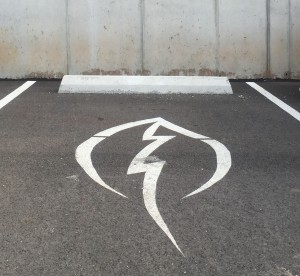 The EIC has two SemaConnect Electric Vehicle Charging Stations. These stations can charge all electric and plug-in hybrid vehicles and are safe, reliable and easy to use.
The EIC has two SemaConnect Electric Vehicle Charging Stations. These stations can charge all electric and plug-in hybrid vehicles and are safe, reliable and easy to use.
We have designated parking spaces for low-emitting and fuel efficient vehicle parking. Just look for the lightning symbol on the pavement in our main lot.
Design-build team
Architect – DLA + Architecture & Interior Design
MEP Engineer – CJL Engineering
Civil Engineer – Gateway Engineers
Landscape Architect – Klavon Design
Commissioning – eCap/ Integrated Services & Consultants, Inc.
Contractor – Mascaro Construction
Sustainability Consultant – evolveEA
Wind Turbine
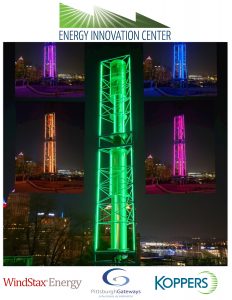
A 40′ tall WindStax ® vertical wind turbine is installed in the EIC main parking lot. WindStax designs and manufactures the largest vertical axis wind turbines in the US. Traditional windmill blades work on principals of lift. WindStax rotors operate on principals of drag to convert wind energy into electrical energy. The patented designs give them unique characteristics. Their high torque low RPM operation is avian-friendly, nearly silent, nondirectional, and more conducive to turbulent winds near the ground and in urban areas than windmills. Each rotor operates independently. WindStax turbines are configured to operate efficiently in conditions unique to their location. The turbine at the Energy Innovation Center produces AC power that is converted and stored in a DC battery bank. The battery uses a non-toxic and non-flammable Aqueous electrolyte that is 100% recyclable. Wind energy is produced, stored, and consumed on site in a WindStax ZeroFirst® microgrid.
At the EIC, the turbine operates its own controls and LED lighting. Excess energy is released as heat. The turbine is rated at 5.6kW, 3kWh battery storage, and 2kW 15A AC output. The EIC WindStax produces enough energy to power the average US household. Annual greenhouse gas offset equivalent is 8.6 Tons of CO2, which is equal to 19,000 passenger car miles or 8,500 pounds of coal burned, or 18 barrels of oil consumed.
